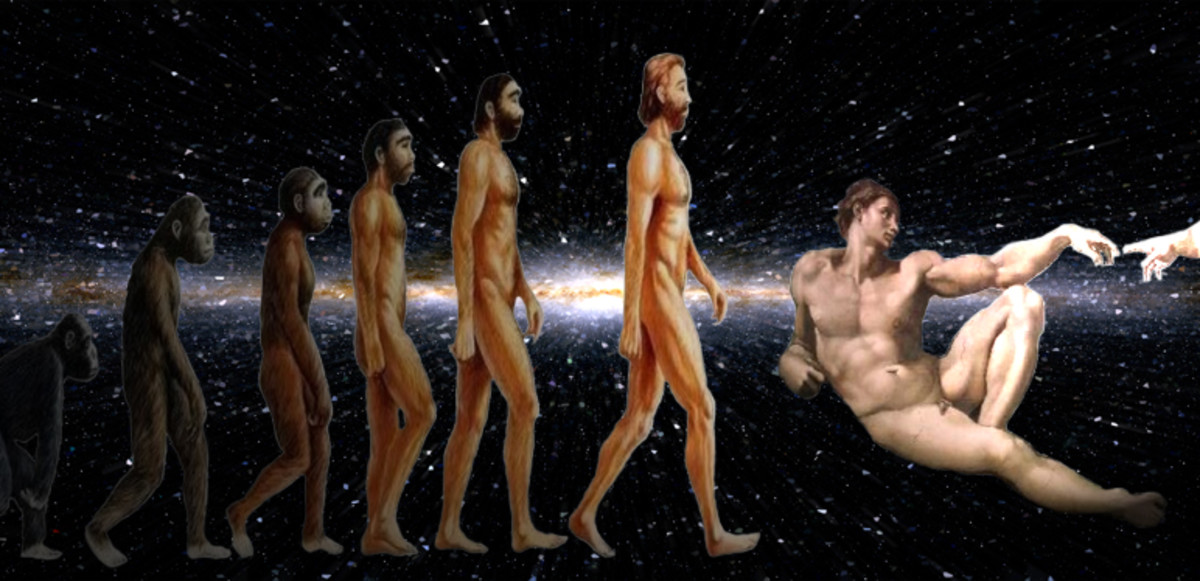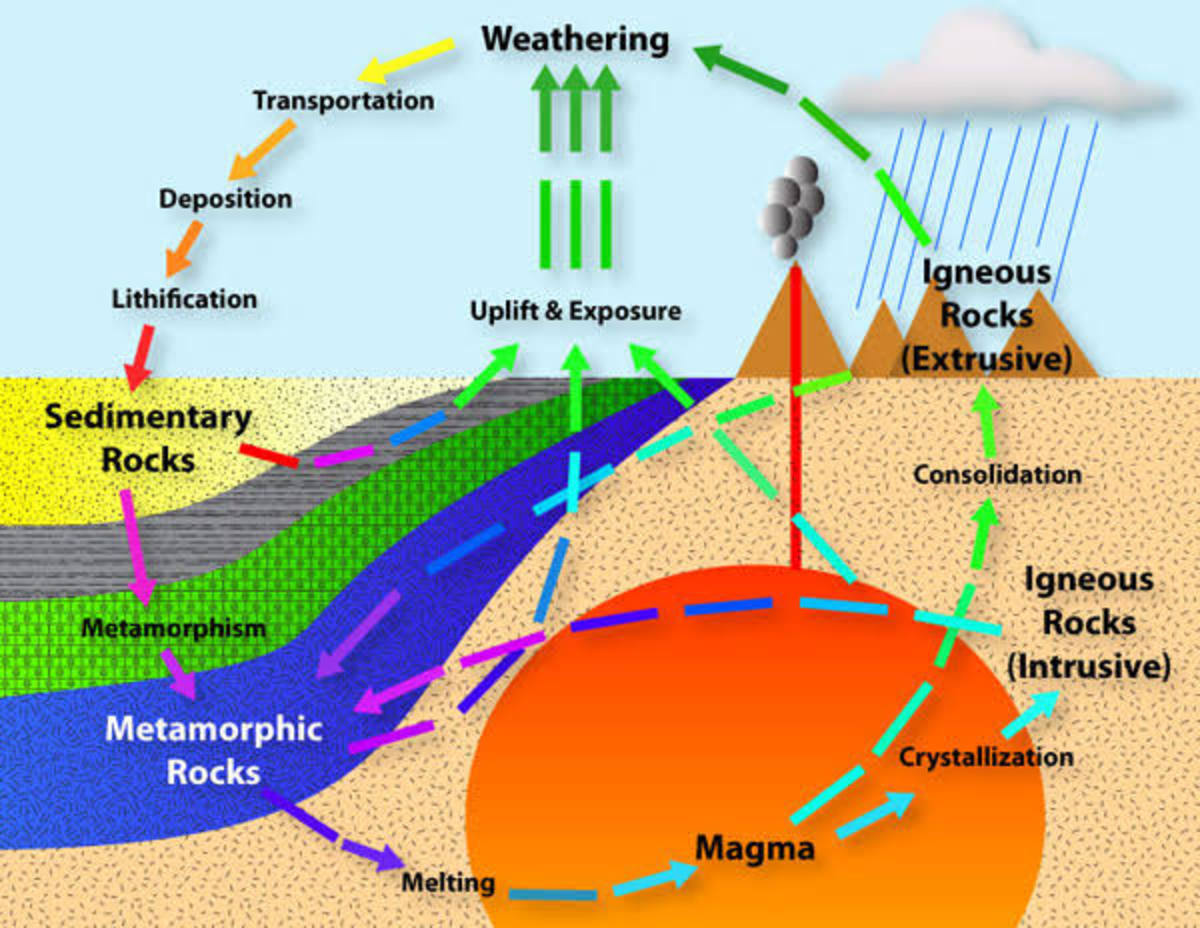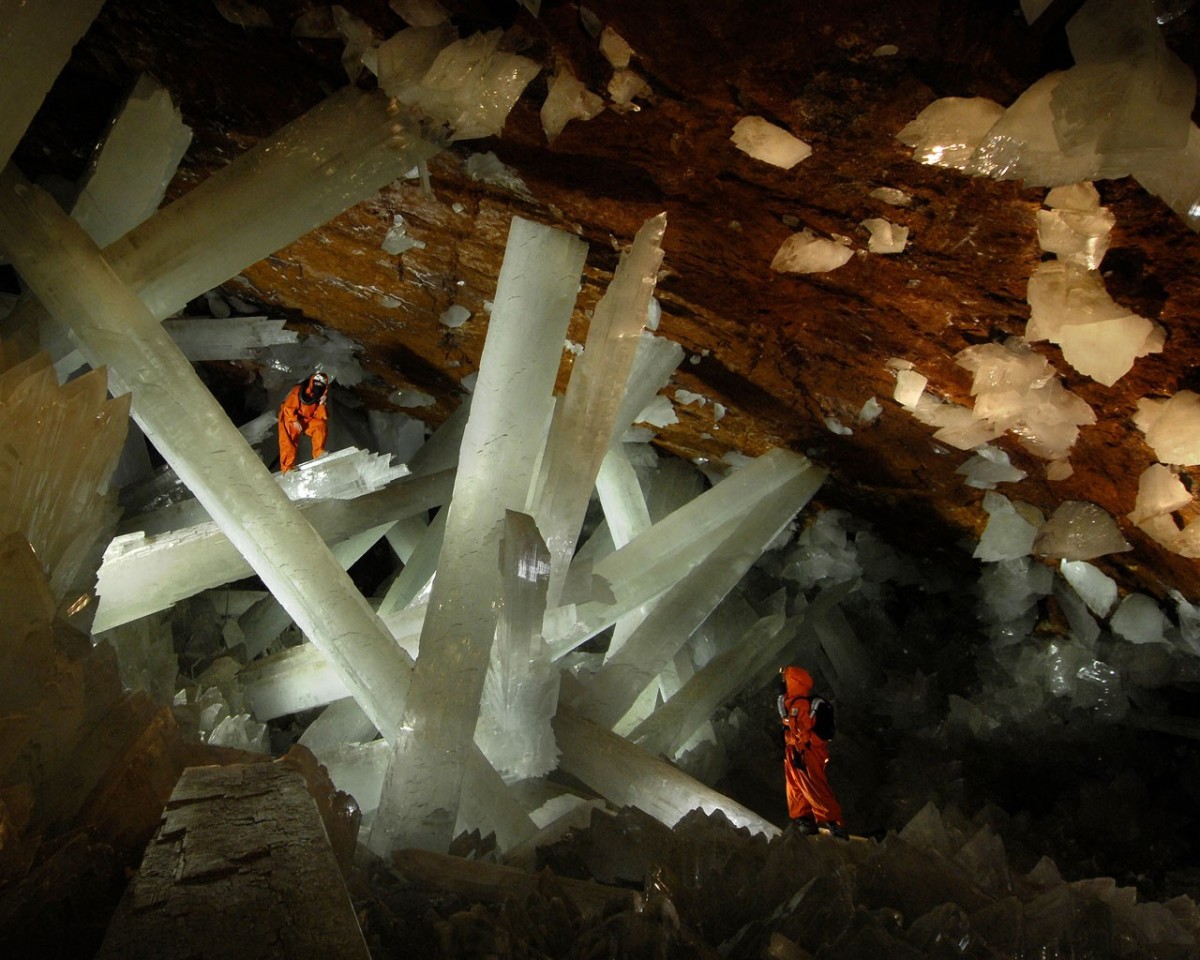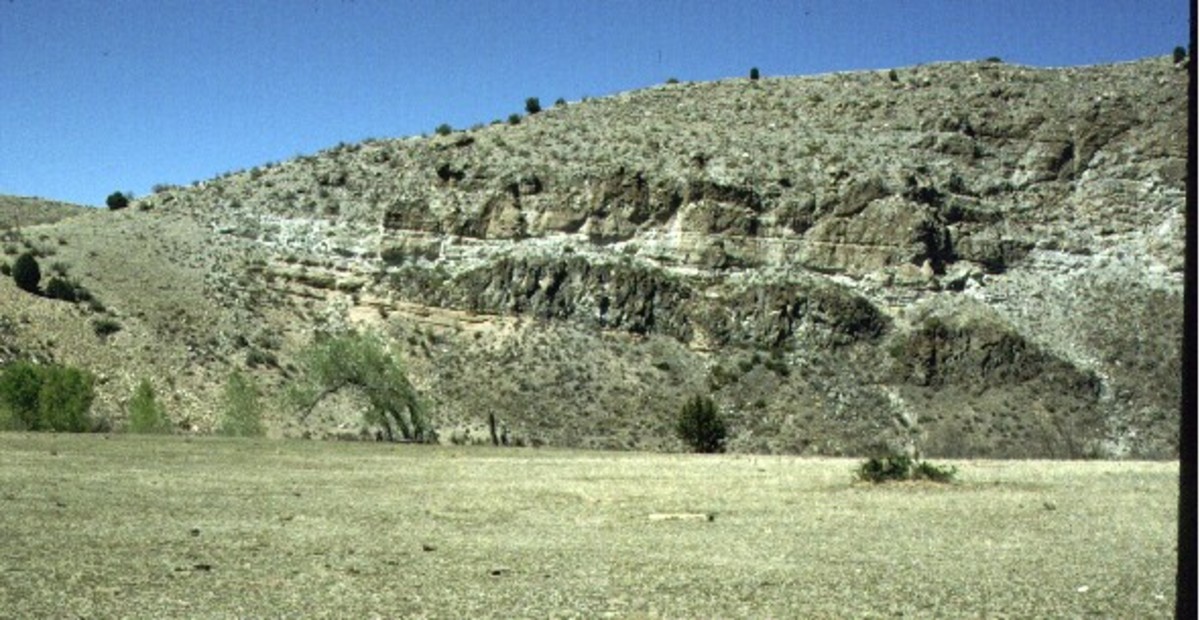Young earth evidence. The sedimentary rocks.
A look at the evidence
Albert Einstein once said "The Lord may be subtle, but he's never malicious!" .What did he mean? Is it that God may have created the earth, but he did it using natural laws (that he wrote in the first place!) and he displays the wonder of creation through those laws.
A few days ago I found a question on the hub 'Creation Myths Part 1' asking "Are there dating methods that indicate a young earth?"
Never one to walk away from a challenge I've started to look at of there really are any methods of dating a young earth? The search has thrown up some interesting things.
I haven't found any 'Theories' as such but it turns out that there are a number of pieces of evidence that are often used in arguing the age of the Earth. There is a lot of discussion as to how accurate the evidence is but I thought it at least worth the look.
Depending on whom you read (or talk to) you'll hear figures anything from "None" to "Over a hundred" so in the next few hubs we're going to take a look at the top ten pieces of evidence for a young earth and see if they 'stack up'
One thing that you'll hear often (I noticed as I read some of the 'old earth' accusations) is that the people teaching about a young earth are people who may have Doctorates but they're not geologists! That just isn't true! Thirty years ago maybe but today the teachers of the young earth accounts are men and women with Doctorates in geology and related fields from some of the most respected and prestigious universities in the world including Harvard. Just in case you want to check that out I've put a link to an article in the New York Times about these scientists.
.
Geologists who believe in creation
- Creationism - Geology - Rocks and Minerals - Science - Evolution - Earth - New York Times
They may never persuade other scientists the earth is young, but creationist geologists are having an impact on other Christians.
In the Beginning God created the Heavens and the Earth

Sedimentary Rocks
The discussion
According to mainstream 'Inflation theory' and evolutionary scientists (by the way "The inflation theory" is the correct term for what we know as the Big Bang theory) the Earth is about four and a half billion years old.
When it first came into existence there was no water on the planet and it was just a huge molten mass probably millions of degrees Celsius but over time it cooled.
When and how water first arrived on earth is still unsure but the theory says that sometime around 3.8 billion years ago water first arrived. Possibly in meteorites or maybe an asteroid strike. By 3 billion years ago enough water was on earth to form rivers, seas and oceans and another process began. EROSION
Water and erosion
For three billion years (according to present theories) water has been on the earth and slowly changing the surface of the planet by a process of erosion. Water is dropped on the high points and slowly (or not so slowly) makes it's way to the oceans where it eventually evaporates and is transported back to the high points to begin the process again.
Each time this takes place the water wears down the rocks that it meets and small, almost microscopic pieces of rock are brought down with the water and eventually deposited either in the ocean or in the mouth of the rivers that it travels in, this process is what's known as erosion.
When the rocks are worn down like this they are known as silt and slowly settle down where over time they compact and become stone again, but this stone is different to the original stone that they were, it's known as 'sedimentary rock'
One thing about sedimentary rock is that since life started on earth living things lived, died and often their bodies settled into the sediment where they either became part of the rock (like limestone which is fossilized micro organisms) or fossils in the rock.
Types of rock on Earth
- Igneous rock.
This is the Rock that came straight out of the Mantle of the earth and had not been changed. A classic of this is a lava flow. - Sedimentary rock.
Once the water or weather patterns have begun to work on the igneous rock and worn it down then sedimentary rock is formed. Sandstone, Coal and Limestone would be three types of sedimentary rock - Metamorphic rock.
This is rock that has come under stress from either heat or pressure and changes. Quartz and Diamonds are metamorphic rocks.
It's estimated that in one year erosion produces between twenty and twenty five billion tons of sedimentary rock. That's just in one year! Yet in all that time only 8% of the earth's rocks are sedimentary! If the earth has had weather patterns to make erosion for 3 billion years then were is it all?
The problem
If erosion has been happening for the past three billion years and water has created about twenty billion tons of sediment every year then there should be a lot more sediment than there is. The total sediment produced by erosion should cover the earth and be thousands of feet thick, but it only covers a small part of the ocean and only to a depth of a few hundred meters.
One argument used is that the tectonic plates are constantly moving and replacing the sediment as it slides back into the mantle at the edges of the plates (earthquakes). But there are problems with that idea.
Some have said that it may be as much as all the sediment that it literally recycled but some studies point out that actually very little sedimentary rock is recycled. The sediment is actually lifted folded and forms the Mountain ranges.
The tectonic plates move about two millimeters (one eighth of an inch) every year. Some years they don't move possibly for decades but then suddenly they move with devastating results "EARTHQUAKE" is the earth's way of renewing itself. Even with the tectonic plates moving and renewing the sediment it still only replaces about five percent of the sediment! or one billion tons. So where's all the rest?
Sediment and the Creation view
Taking the argument to it's conclusion
The argument goes that if we use the presence and quantity of sedimentary rocks as evidence of a young earth then according to Dr Andrew Snelling (Doctorate in geology) we would come up with a date for the earth of around twelve million years which is considerably more than the 6-10,000 years of the creation account (around 200 times the age) but considerably less than the 4.5 billion years of the old earth proponents (around 400 times less than that!)
So, if the figures are correct then we have the following situation
If we date the earth at 10,000 years then the discrepancy is 11,990,000 years but
If we date the earth at 4,500,000,000 years then the discrepancy is 4,498,000,000 years!
Young earth creation seeks to explain the excess sediment as the result of the flood during Noah's time and a devastating but brief ice age that happened afterwards where many of the fjords and lakes were formed.
In conclusion
In a sense this hub could be a never ending task as more and more is uncovered in this area. This is only one 'evidence' that is quoted in this subject and I'm not 100% sure that I've put it in the best light but I wanted to put it 'out there' to stimulate discussion among people.
I'm not expecting to change anyone's views on creation and evolution and that's not the purpose of the discussion, more to show the 'other side' to a debate that has been going on rather one sided for a long time.
I'm actually hoping that my fellow hubbers who have an interest in this subject will join in and leave comments with their thoughts that I can follow up on and we can all benefit from the discussion.
Hope you enjoyed the hub.
Leave a comment
Lawrence

Sites to Look up for Further Study
- CD220.1: Sediment deposition vs. subduction rates.
Seeks to answer the question "where did the sediment go" - History, Travel, Arts, Science, People, Places | Smithsonian
Argues water arrived on Earth via either comets or asteroids about 3.8 billion years ago and oceans formed 3 billion years ago. Since then rivers have been wearing the rocks down causing sedimentation. - ocean basin | Earth feature :: Deep-sea sediments | Encyclopedia Britannica
Any of several vast submarine regions that collectively cover nearly three-quarters of Earth’s surface. Together they contain the overwhelming majority of all water on the planet... - #1 Very Little Sediment on the Seafloor | Answers in Genesis
If sediments have been accumulating on the seafloor for three billion years, the seafloor should be choked with sediments many miles deep.








